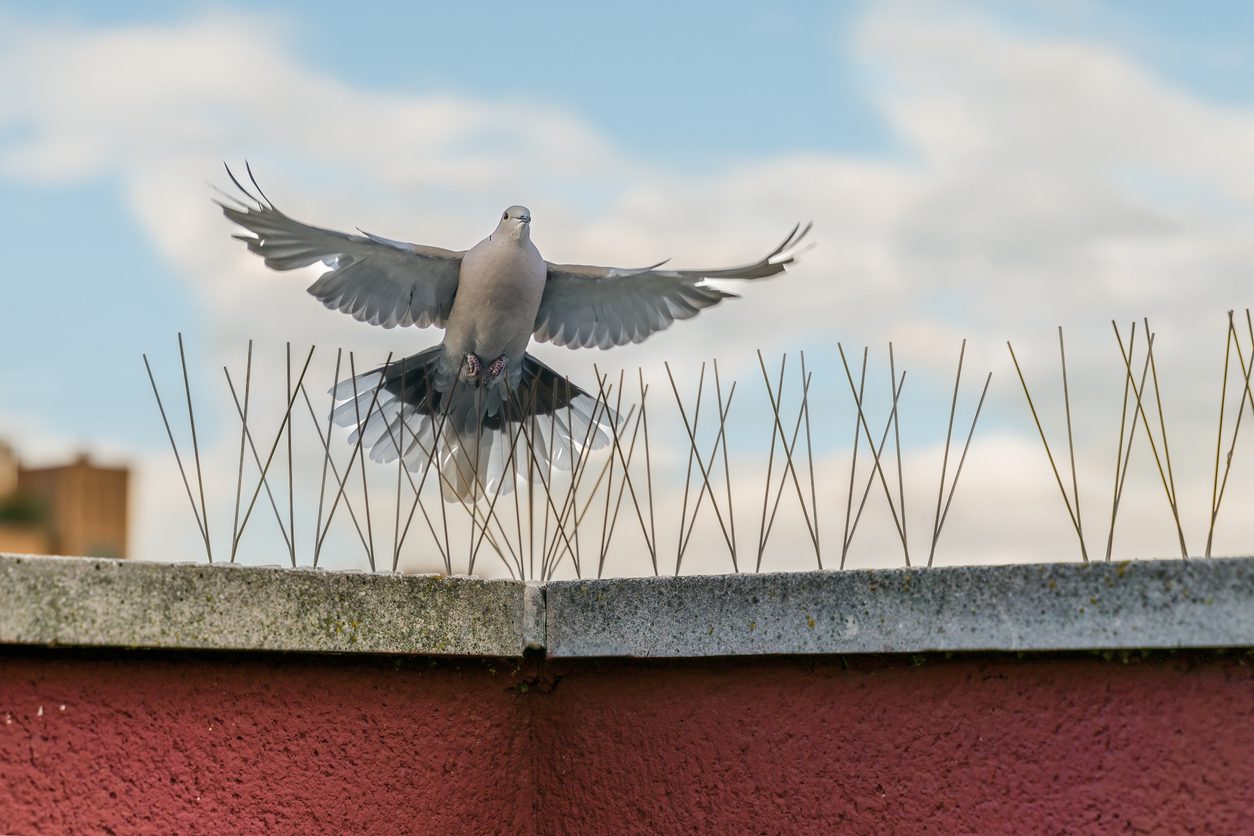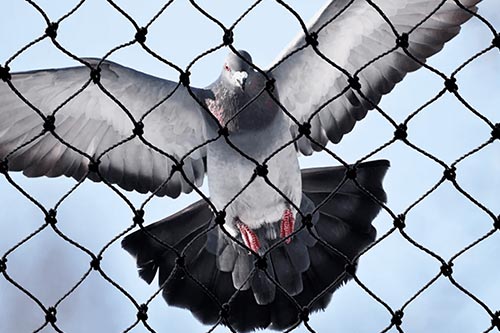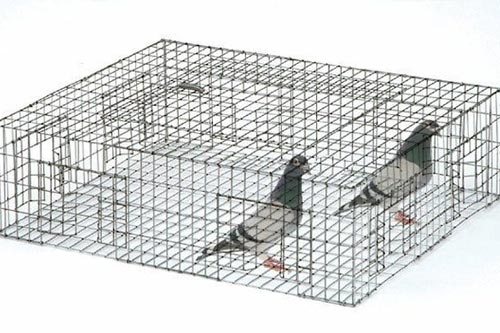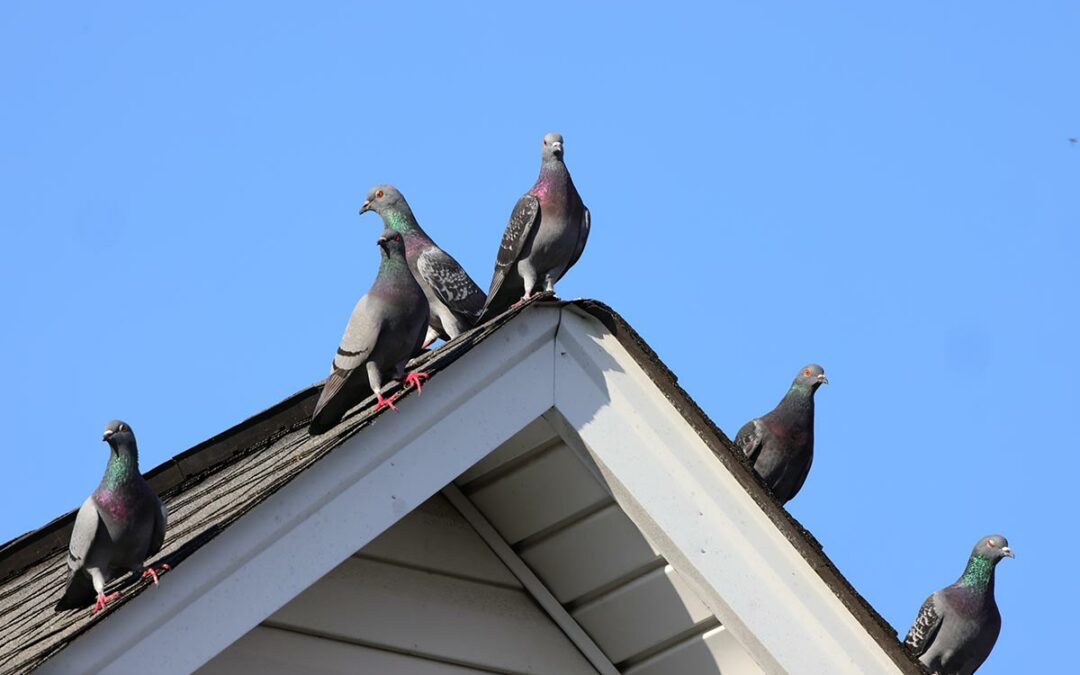
by Pigeon Patrol | Feb 10, 2025 | 4-S Gel Bird repellent, Animal Deterrent Products, Bird Deterrent Products, Bird Netting, Bird Spike, Bird Spikes, pet bird, Pigeon Patrol's Services, Pigeon Spikes, Pigeons, Raccoons, Sparrows, UltraSonic Bird Control
Pigeons may seem harmless at first, but once they take over a property, they can create serious problems. They leave behind acidic droppings, clog drainage systems, spread diseases, and make a lot of noise. If you’re dealing with a pigeon infestation, you’re probably wondering: how do I get rid of pigeons for good?
The good news is that there are humane and effective methods to control pigeons. In this guide, we’ll cover why pigeons are a problem, the best pigeon control solutions, and how to prevent them from returning.
Why Pigeons Are a Problem
1. Pigeon Droppings Cause Property Damage
Pigeon droppings are acidic and can erode stone, concrete, and metal surfaces. Over time, this can cause damage to rooftops, balconies, cars, and historical buildings.
2. Pigeons Spread Diseases
Pigeons carry bacteria, fungi, and parasites that can lead to serious health risks. Some diseases associated with pigeons include:
- Histoplasmosis – A fungal infection that affects the lungs.
- Salmonella – Bacteria that cause food poisoning.
- E. coli – A serious bacterial infection.
3. They Block Drainage and Ventilation Systems
Pigeons often nest in gutters, vents, and chimneys, causing blockages that can lead to water damage and poor air circulation.
4. Pigeon Infestations Hurt Business Image
If pigeons are constantly roosting on your storefront or business sign, it can create a dirty and unprofessional look that turns away customers.
Best Ways to Get Rid of Pigeons
Install Bird Spikes to Prevent Perching
Bird spikes are one of the best pigeon deterrents. They are designed to make it impossible for pigeons to land on ledges, fences, and rooftops.
Use Bird Netting to Keep Pigeons Away from Large Areas
If you need to prevent pigeons from accessing balconies, rooftops, or warehouses, bird netting is a great solution. It creates a physical barrier without harming the birds.
Install Pigeon Repellers (Ultrasonic & Motion Activated)
Ultrasonic pigeon repellers emit high-frequency sounds that humans can’t hear but pigeons find annoying. Motion-activated repellers use light and sound to scare birds away.
Pigeon Trapping for Severe Infestations
For larger infestations, humane pigeon traps may be necessary.
Simple Solutions
- Block Entry Points with Pigeon-Proof Barriers
Pigeons like to nest in vents, chimneys, and eaves. Use wire mesh or netting to block these spaces and prevent pigeons from returning.
- Clean Up Food Sources & Water Availability
Pigeons are drawn to food scraps and water sources. Seal trash bins, clean up outdoor eating areas, and remove standing water to make your property less attractive to pigeons.
Are bird spikes harmful to pigeons?
No, bird spikes do not harm pigeons. They simply prevent them from landing on surfaces.
How long does it take for pigeon deterrents to work?
Most deterrents work immediately after installation. However, pigeons may take a few days to realize the area is no longer suitable for roosting.
Do pigeon repellers work on other birds?
Yes, ultrasonic and motion-activated repellers can deter other pest birds such as crows and seagulls.
Will pigeons eventually stop coming back?
Yes, if you remove food sources, block access points, and use deterrents consistently, pigeons will find another place to roost.
Where can I buy high-quality pigeon deterrents?
You can get bird spikes, netting, and repellers at Pigeon Patrol, a trusted name in pigeon control solutions.
Pigeons can be a major nuisance, but with the right pigeon control solutions, you can protect your home or business. Whether you choose bird spikes, netting, repellers, or a combination of these, taking proactive steps will keep pigeons away for good.
For expert pigeon control products, check out our Pigeon Patrol products and browse our range of humane pigeon deterrents.
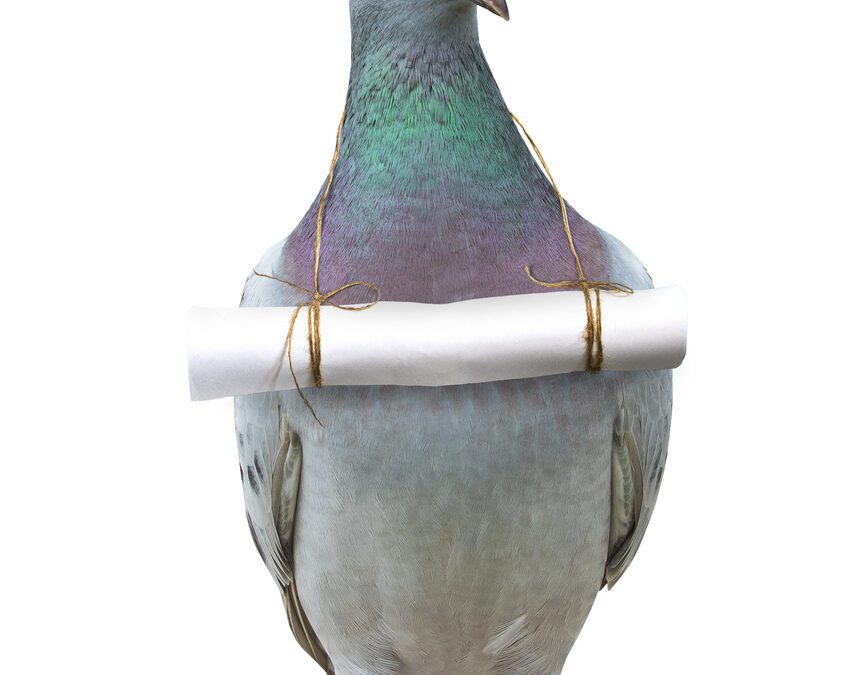
by Pigeon Patrol | Oct 15, 2024 | Bird Netting, Bird Spikes, Columbidae, Doves
A woman has expressed her disgust at the amount of ‘dead pigeons, droppings and shed feathers’ scattered across a railway bridge not far from Reading Station.
The railway line goes directly over Caversham Road taking trains to and from Reading along the Great Western Railway, with two lanes, traffic going in two directions and walkways on either side.
The bridge has become a popular roost for pigeons. This had led the regular user of this walkway to complain that it is ‘constantly covered in pigeon poo and corpses’.
Photos show a deceased bird on the concrete, the walkways covered in a mix of feathers and bird mess, and pigeons roosting despite netting being placed under the bridge in an attempt to ward them off. The woman, who lives nearby, said: “I’ve lived in Swansea Road for six and a bit years, and it’s got worse for three to four years.
“The netting under the bridge is torn and fallen down.
“The bridge should be chicken-wired. “There’s pigeon faeces running down the walls, and dead and dying birds on the pavement and the road.
“There’s often baby birds sitting on the pavement dying, it’s just really disgusting.
“When it rains the water mixes with the droppings, so you have liquid faeces dropping on people under the bridge. You have to use an umbrella.
“There are some pigeon spikes there but they’re not effective. “It’s just really grim.”

Mature gay couple feeding pigeons during a travel in Colombia
A dead pigeon seen at the Caversham Road railway underpass. She added she has reported the situation to the council’s Love Clean Reading app. However, she said just cleaning the footpath is not a solution. The woman continued: “Because it’s not blocked off, the pigeons can make nesting sites there.
“Although it’s an ideal habitat for them, this is not a healthy place for them to live, and it’s not healthy for us either. “I helped a woman who fell and tore her hand recently, I just hope she doesn’t get a nasty infection, because it’s filthy down there.” She then called for the bridge to be more thoroughly secured to dissuade the pigeons from nesting there.
The nets have not prevented pigeons roosting under the bridge over Caversham Road in Reading. When asked what could be done to rectify the issue, councillor Tony Page (Labour, Abbey) lead for transport, said: “The bridge structure and the pigeon netting above falls under the responsibility of Network Rail.
“The council’s street cleansing team regularly clean the footway below. “We understand that Network Rail has funding for an alternate solution to the netting and a scheme is currently being designed with a view to deliver this financial year. “We will support by providing the traffic management and lane closures to facilitate their works.
“The new solution should resolve issue on the footpath on both sides.” The concrete is caked in pigeon droppings and feathers as people walk through the Caversham Road Underpass. Credit: UGC
A spokesperson for Network Rail confirmed that netting under the bridge will be replaced. The spokesperson said: “We take our impact on the environment and our local communities seriously.
“We regularly inspect the condition of our infrastructure including deterrent measures such as the pigeon netting underneath Caversham Road bridge.
“We have agreed with Reading Borough Council that we will replace the existing netting with a new, more effective system and are working with our contractors to design this new system and agree a programme timeline for its installation.”
Pigeon Patrol Products & Services is the leading manufacturer and distributor of bird deterrent (control) products in Canada. Pigeon Patrol products have solved pest bird problems in industrial, commercial, and residential settings since 2000, by using safe and humane bird deterrents with only bird and animal -friendly solutions. At Pigeon Patrol, we manufacture and offer a variety of bird deterrents, ranging from Ultra-flex Bird Spikes with UV protection, Bird Netting, 4-S Bird Gel and the best Ultrasonic and audible sound devices on the market today.
Canada’s top wholesaler for bird deterrent products for twelve consecutive years.
Contact us at 1- 877– 4– NO-BIRD, (604) 585-9279 or visit our website at https://www.pigeonpatrol.ca/
Bird Gone, Pigeon Gone, Pigeon problems, pigeon spikes, 1-877-4NO-BIRD, 4-S Gel, Bird Control, Pigeon Control, bird repellent, Bird Spikes, sonic bird repellent, stainless steel bird spikes, bird spikes Vancouver, Ultra Sonic Bird Control, Bird Netting, Plastic Bird Spikes, Canada bird spike deterrents, Pigeon Pests, B Gone Pigeon, Pigeon Patrol, pest controller, pest control operator, pest control technician, Pigeon Control Products, humane pigeon spikes, pigeon deterrents, pigeon traps, Pigeon repellents, Sound & Laser Deterrents, wildlife control, raccoon, skunk, squirrel deterrent, De-Fence Spikes, Dragons Den, Pigeon, Pigeon Patrol, Pigeons Roosting, Vancouver Pigeon Control, Bird Spikes, Bird Control, Bird Deterrent, Pigeon Deterrent, Surrey Pigeon Control, Pest, Seagull deterrent Vancouver Pigeon Blog, Birds Inside Home De-fence, Pigeon Nesting, Bird Droppings, Pigeon Dropping, woodpecker control, Keep The Birds Away, Birds/rats, seagull, pigeon, woodpecker, dove, sparrow, pidgeon control, pidgeon problem, pidgeon control, flying rats, pigeon Problems, bird netting, bird gel, bird spray, bird nails, bird guard, Pigeon control, Bird deterrents, Pigeon deterrents, Bird control, solutions, Pigeon prevention, Pigeon repellent, Bird proofing, Pest bird management, Pigeon spikes, Bird netting, Humane bird control, Bird exclusion, Urban bird control, Anti-roosting devices, Pigeon removal, Bird barriers
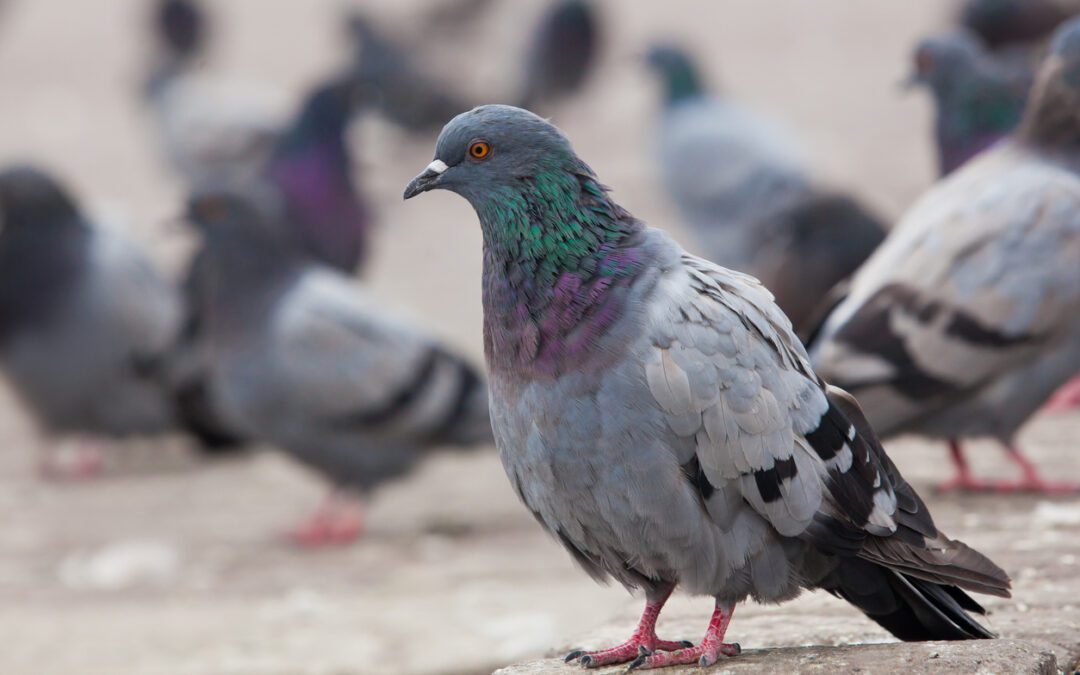
by Pigeon Patrol | Oct 15, 2024 | Bird Netting, Bird Spikes, Pigeons, Pigeons in the News, Raccoons
Fresh debate has been sparked over a controversial Oxford statue after onlookers noted it had been pelted with “pigeon droppings”.
The Cecil Rhodes statue on the grounds of Oriel College at University of Oxford was covered in protective black netting after protesters in 2020 demanded it be taken down.
Before then, it had been a free for all zone for pigeons in Oxford.
“Earlier in my life I lived in Zambia, which used to be known as Northern Rhodesia, after Rhodes.
“As soon as they won their independence they changed the name of the country, because Rhodes prevented Africans from voting and stole their valuable resources.
“I agree with those who say that statues of people like him belong in a museum, not on a pedestal. People need to be able to read about the good and the bad things he did when he was alive.”
The statue of Rhodes, a 19th century imperialist linked to the slave trade, has been shrouded in controversy for years.
It gained renewed attention in June 2020 after a statue of the 17th century slave trader Edward Colston, was thrown in a dock in Bristol by Black Lives Matter protesters.
The Cecil Rhodes statue was set to be removed by summer 2021 and placed in a museum after governors of Oriel College voted to take it down – reversing a decision they made in 2016.
The Cecil Rhodes statue in High Street.
This was eventually prevented by “regulatory and financial challenges” but an explanatory plaque “contextualising” the statue was placed next to gating at the building.
Green city councillor Emily Kerr said: “I’ve long been disappointed that Oriel College hasn’t been able to come to a suitable compromise on the statue of Rhodes.
“It seems that it should be possible to have a pragmatic compromise, such as turning the statue around to face the wall and clearly highlighting the colonial history should be possible. I hope this is a step towards some action being taken.”
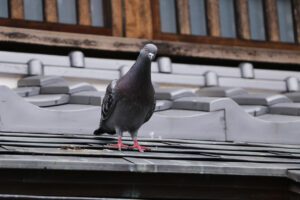
Thousands of people signed a petition against removal of the statue when it was due to be taken down in 2021.
Greg Everest, who started the petition, said at the time: “Cecil Rhodes is an historical figure with world wide significance. We must keep our history, British history, in order to learn from it regardless of political feelings and persuasions.
“If we continue down the road of removing statues of people who we feel no longer fit today’s morality we will have to remove 90 per cent of British monuments along with our kings and queens.”
Pigeon Patrol Products & Services is the leading manufacturer and distributor of bird deterrent (control) products in Canada. Pigeon Patrol products have solved pest bird problems in industrial, commercial, and residential settings since 2000, by using safe and humane bird deterrents with only bird and animal -friendly solutions. At Pigeon Patrol, we manufacture and offer a variety of bird deterrents, ranging from Ultra-flex Bird Spikes with UV protection, Bird Netting, 4-S Bird Gel and the best Ultrasonic and audible sound devices on the market today.
Canada’s top wholesaler for bird deterrent products for twelve consecutive years.
Contact us at 1- 877– 4– NO-BIRD, (604) 585-9279 or visit our website at https://www.pigeonpatrol.ca/
Bird Gone, Pigeon Gone, Pigeon problems, pigeon spikes, 1-877-4NO-BIRD, 4-S Gel, Bird Control, Pigeon Control, bird repellent, Bird Spikes, sonic bird repellent, stainless steel bird spikes, bird spikes Vancouver, Ultra Sonic Bird Control, Bird Netting, Plastic Bird Spikes, Canada bird spike deterrents, Pigeon Pests, B Gone Pigeon, Pigeon Patrol, pest controller, pest control operator, pest control technician, Pigeon Control Products, humane pigeon spikes, pigeon deterrents, pigeon traps, Pigeon repellents, Sound & Laser Deterrents, wildlife control, raccoon, skunk, squirrel deterrent, De-Fence Spikes, Dragons Den, Pigeon, Pigeon Patrol, Pigeons Roosting, Vancouver Pigeon Control, Bird Spikes, Bird Control, Bird Deterrent, Pigeon Deterrent, Surrey Pigeon Control, Pest, Seagull deterrent Vancouver Pigeon Blog, Birds Inside Home De-fence, Pigeon Nesting, Bird Droppings, Pigeon Dropping, woodpecker control, Keep The Birds Away, Birds/rats, seagull, pigeon, woodpecker, dove, sparrow, pidgeon control, pidgeon problem, pidgeon control, flying rats, pigeon Problems, bird netting, bird gel, bird spray, bird nails, bird guard, Pigeon control, Bird deterrents, Pigeon deterrents, Bird control, solutions, Pigeon prevention, Pigeon repellent, Bird proofing, Pest bird management, Pigeon spikes, Bird netting, Humane bird control, Bird exclusion, Urban bird control, Anti-roosting devices, Pigeon removal, Bird barriers
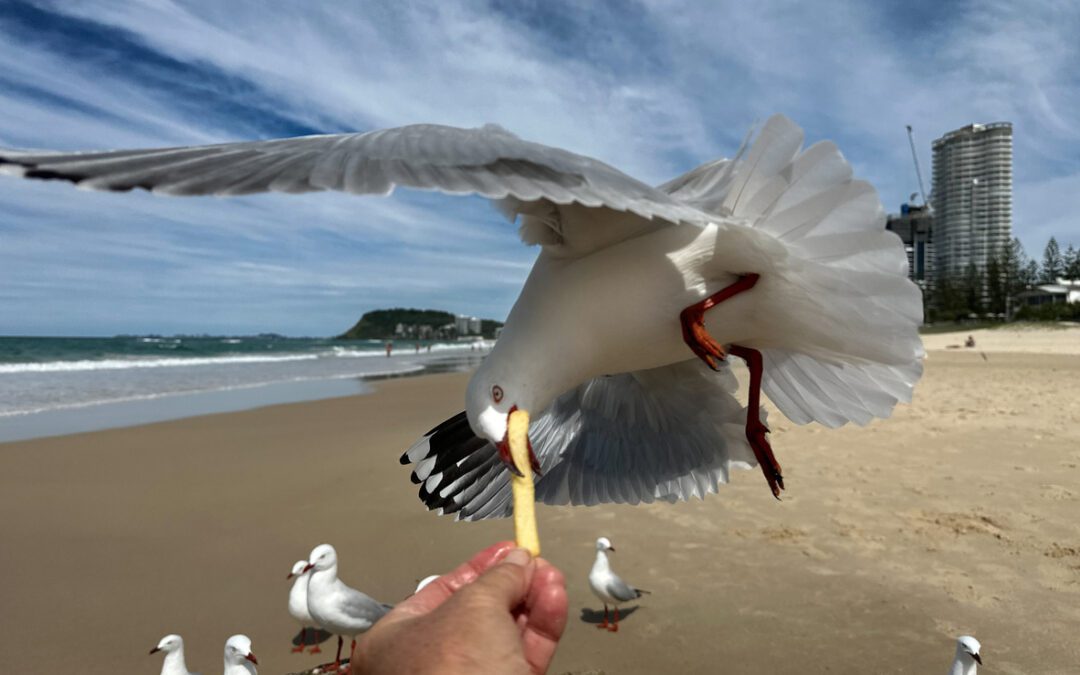
by Pigeon Patrol | Oct 15, 2024 | Bird Deterrent Products, Bird Law, Bird Netting, Bird Spikes, Columbidae
The U.K. considered training pigeons to deliver weapons of mass destruction but changed its mind, government files show.
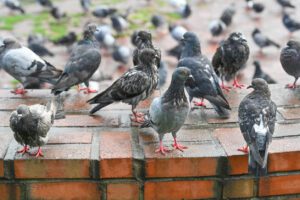
City pigeons
It considered using the birds to deliver biological weapons after World War II but decided the birds had outlived their usefulness in battle.
Homing pigeons carried vital messages in wartime, and the Pigeon Policy Committee of the day discussed training them to undertake ever more daring tasks.
“We can now train pigeons to ‘home’ to any object on the ground when air-released in the vicinity… Bacteria might be delivered accurately to a target by this means,” head of the Air Ministry Pigeon Section Lea Rayner said in a 1945 report.
“With the latest developments of explosives and bacterial science I suggest that this possibility should be closely investigated and watched.
“A thousand pigeons, each with a two ounce explosive capsule, landed at intervals on a specific target might be a seriously inconvenient surprise.”
But other committee members did not share Rayner’s enthusiasm and in 1948 the armed services said they had no further interest in pigeons.
The secret services, however, thought anti-British forces would continue to communicate with each other via pigeons and asked a civilian pigeon fancier to keep 100 birds for MI5 to use to prepare countermeasures.
But they abandoned that scheme in 1950.
The U.K. used about 250,000 pigeons to carry messages in World War II and 32 of the birds received the Dickin Medal, the highest award of valour for animals.
The birds were also used for aerial surveillance. At the beginning of the 20th century Bavaria’s pigeon fleet flew over Europe with cameras attached to their bodies that took a series of timed shots.
Pigeon Patrol Products & Services is the leading manufacturer and distributor of bird deterrent (control) products in Canada. Pigeon Patrol products have solved pest bird problems in industrial, commercial, and residential settings since 2000, by using safe and humane bird deterrents with only bird and animal -friendly solutions. At Pigeon Patrol, we manufacture and offer a variety of bird deterrents, ranging from Ultra-flex Bird Spikes with UV protection, Bird Netting, 4-S Bird Gel and the best Ultrasonic and audible sound devices on the market today.
Canada’s top wholesaler for bird deterrent products for twelve consecutive years.
Contact us at 1- 877– 4– NO-BIRD, (604) 585-9279 or visit our website at https://www.pigeonpatrol.ca/
Bird Gone, Pigeon Gone, Pigeon problems, pigeon spikes, 1-877-4NO-BIRD, 4-S Gel, Bird Control, Pigeon Control, bird repellent, Bird Spikes, sonic bird repellent, stainless steel bird spikes, bird spikes Vancouver, Ultra Sonic Bird Control, Bird Netting, Plastic Bird Spikes, Canada bird spike deterrents, Pigeon Pests, B Gone Pigeon, Pigeon Patrol, pest controller, pest control operator, pest control technician, Pigeon Control Products, humane pigeon spikes, pigeon deterrents, pigeon traps, Pigeon repellents, Sound & Laser Deterrents, wildlife control, raccoon, skunk, squirrel deterrent, De-Fence Spikes, Dragons Den, Pigeon, Pigeon Patrol, Pigeons Roosting, Vancouver Pigeon Control, Bird Spikes, Bird Control, Bird Deterrent, Pigeon Deterrent, Surrey Pigeon Control, Pest, Seagull deterrent Vancouver Pigeon Blog, Birds Inside Home De-fence, Pigeon Nesting, Bird Droppings, Pigeon Dropping, woodpecker control, Keep The Birds Away, Birds/rats, seagull, pigeon, woodpecker, dove, sparrow, pidgeon control, pidgeon problem, pidgeon control, flying rats, pigeon Problems, bird netting, bird gel, bird spray, bird nails, bird guard, Pigeon control, Bird deterrents, Pigeon deterrents, Bird control, solutions, Pigeon prevention, Pigeon repellent, Bird proofing, Pest bird management, Pigeon spikes, Bird netting, Humane bird control, Bird exclusion, Urban bird control, Anti-roosting devices, Pigeon removal, Bird barriers
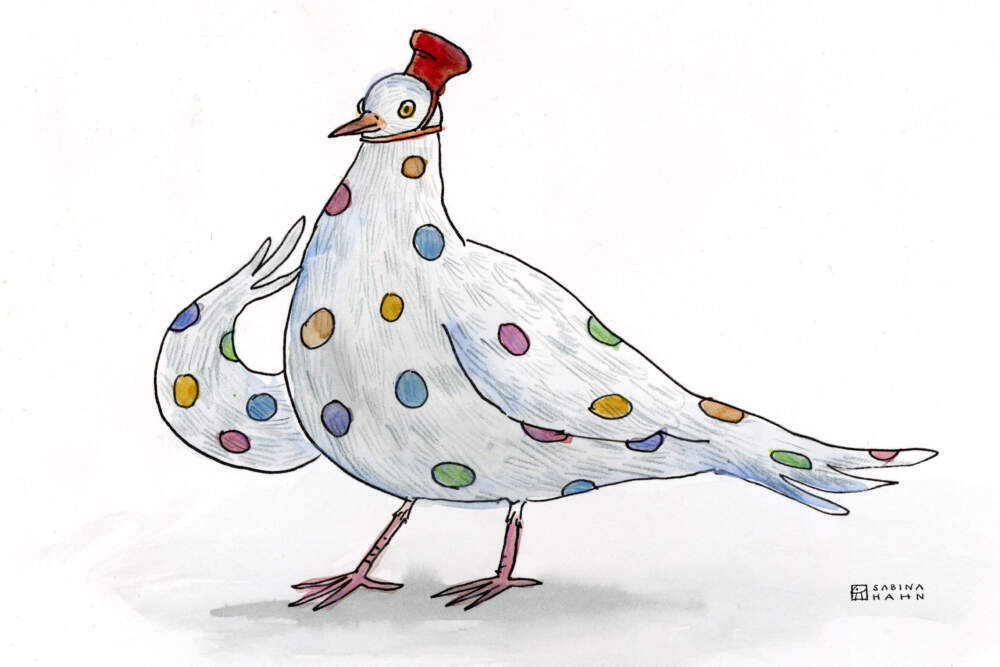
by Pigeon Patrol | Oct 15, 2024 | Animal Deterrent Products, Bird Deterrent Products, Bird Law, Bird Netting, Bird Spikes
Mayor of London Ken Livingstone was unexpectedly “ruffled” on his trip to the US, by protesters opposed to his plan to reduce the number of pigeons in Trafalgar Square.
He was on a fact-finding mission to the US, but had not expected to be doused in water over an issue related to London’s most famous square.Mr Livingstone has been criticised after refusing to renew the licence of the last bird feed vendor in Trafalgar Square. Andrew Butler, a spokesman for the pressure group People for the Ethical Treatment of Animals (PETA) told how activists doused Mr Livingstone with a pitcher of water during a news conference in Washington DC on Thursday.
A protester shouted: “Your plan to poison pigeons is all wet. Mayor Livingstone starves pigeons to death.”
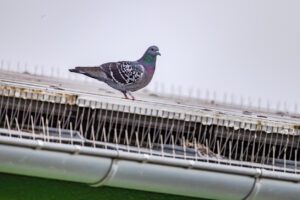
Pigeon on a roof with solar panels with pigeon spikes to repel pigeons, Darmstadt, Germany
Bird feed seller Bernard Rayner has until Friday to give up his job, after which the Greater London Authority will implement a one-month phased withdrawal of feed from the capital’s famous landmark.Mr Rayner had traded on a temporary licence since October after a High Court appeal against an earlier move by Mr Livingstone to target the pigeons.
At that time, Labour MP Tony Banks tabled a Commons’ motion in a bid to save the “gentle London pigeon”. Mr Butler said that people in the UK may be surprised about the trans-Atlantic interest shown in the issue – but the US activists feel strongly about the fate of the birds. He said: “This isn’t Hawaii. It’s freezing-cold concrete-covered London. There are no luscious fruit trees for the birds to flit over to. The baby and elderly pigeons have nowhere else to seek food.
“They’ll starve. What’s he going to introduce next? Bear-baiting? He is waging war against the symbol of peace. Pigeons are rock doves, and Ken needs to extend an olive branch.” The GLA plans to clean up the mess caused by pigeon droppings and pedestrianise the upper part of the square to make way for more cultural pursuits for visitors.
But Dr Jayne Cuthbert, a research fellow at Kingston University who has advised the government on pigeons, confirmed PETA’s fears that withdrawing the food supply will result in the deaths of thousands of the birds.
She said: “The basic law of ecology is that there will only be as many birds in any area as there is enough food to feed them. “The Trafalgar Square pigeons will therefore not be able to fly off elsewhere because there will be no food available.” The number of pigeons in British towns and cities is estimated to have doubled in the past five years.
Mr Livingstone spent the earlier part of the week in New York to find out about its public transport and urban regeneration schemes. He is now spending two days in Washington as a guest at the annual conference of US mayors
Pigeon Patrol Products & Services is the leading manufacturer and distributor of bird deterrent (control) products in Canada. Pigeon Patrol products have solved pest bird problems in industrial, commercial, and residential settings since 2000, by using safe and humane bird deterrents with only bird and animal -friendly solutions. At Pigeon Patrol, we manufacture and offer a variety of bird deterrents, ranging from Ultra-flex Bird Spikes with UV protection, Bird Netting, 4-S Bird Gel and the best Ultrasonic and audible sound devices on the market today.
Canada’s top wholesaler for bird deterrent products for twelve consecutive years.
Contact us at 1- 877– 4– NO-BIRD, (604) 585-9279 or visit our website at https://www.pigeonpatrol.ca/
Bird Gone, Pigeon Gone, Pigeon problems, pigeon spikes, 1-877-4NO-BIRD, 4-S Gel, Bird Control, Pigeon Control, bird repellent, Bird Spikes, sonic bird repellent, stainless steel bird spikes, bird spikes Vancouver, Ultra Sonic Bird Control, Bird Netting, Plastic Bird Spikes, Canada bird spike deterrents, Pigeon Pests, B Gone Pigeon, Pigeon Patrol, pest controller, pest control operator, pest control technician, Pigeon Control Products, humane pigeon spikes, pigeon deterrents, pigeon traps, Pigeon repellents, Sound & Laser Deterrents, wildlife control, raccoon, skunk, squirrel deterrent, De-Fence Spikes, Dragons Den, Pigeon, Pigeon Patrol, Pigeons Roosting, Vancouver Pigeon Control, Bird Spikes, Bird Control, Bird Deterrent, Pigeon Deterrent, Surrey Pigeon Control, Pest, Seagull deterrent Vancouver Pigeon Blog, Birds Inside Home De-fence, Pigeon Nesting, Bird Droppings, Pigeon Dropping, woodpecker control, Keep The Birds Away, Birds/rats, seagull, pigeon, woodpecker, dove, sparrow, pidgeon control, pidgeon problem, pidgeon control, flying rats, pigeon Problems, bird netting, bird gel, bird spray, bird nails, bird guard, Pigeon control, Bird deterrents, Pigeon deterrents, Bird control, solutions, Pigeon prevention, Pigeon repellent, Bird proofing, Pest bird management, Pigeon spikes, Bird netting, Humane bird control, Bird exclusion, Urban bird control, Anti-roosting devices, Pigeon removal, Bird barriers
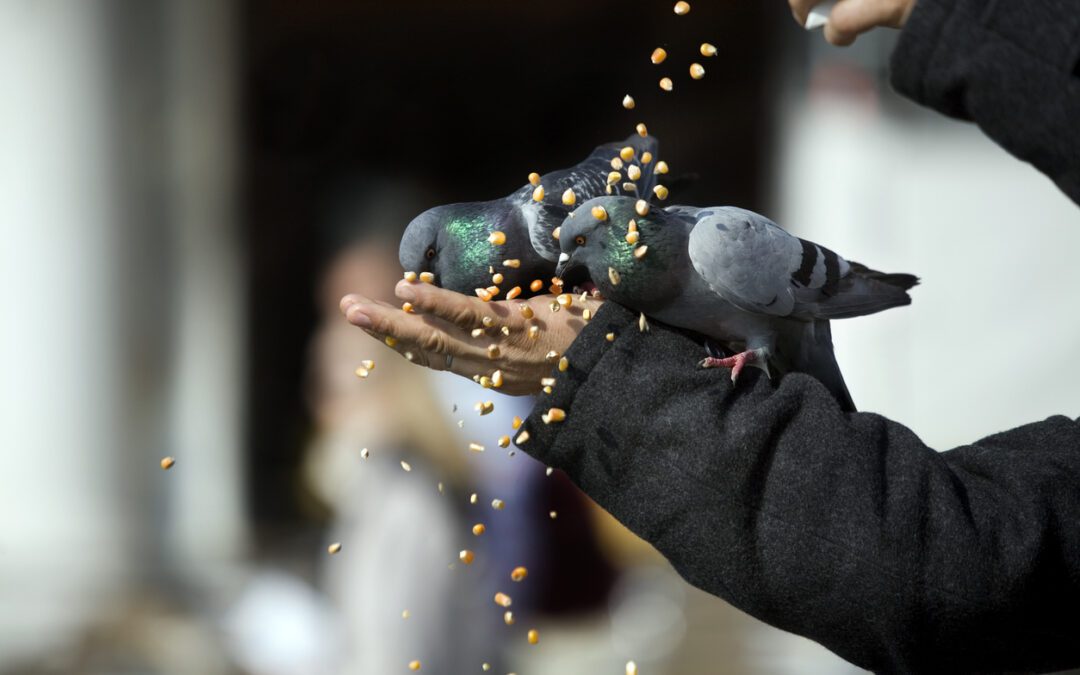
by Pigeon Patrol | Oct 15, 2024 | Bird Deterrent Products, Bird Law, Bird Netting, Bird Spikes, Columbidae
Nearly three-quarters of Big Apple kids may have been exposed to a pigeon-poop fungus that can cause vomiting, fever and other illnesses, a new study revealed yesterday.
According to researchers at Albert Einstein College of Medicine in The Bronx, 70 percent of urban kids are exposed to Cryptococcus neoforman fungus, which grows in rotting pigeon roosts and is present in pigeon droppings.
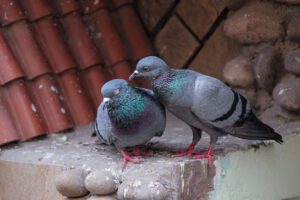
Moment of tenderness between a pair of pigeons
The researchers took blood samples from 185 healthy Bronx children and found that seven out of ten of those over the age of five, and 56 percent younger than five, were infected by the fungus.
Expert say the airborne fungus – which remains until adulthood – may be an underlying cause of many mysterious cases of vomiting, fever and lethargy.
“We were surprised by the number of children exposed to this fungus,” said Dr. David Goldman, and assistant professor of pediatrics at the medical school.
“It’s all over because pigeons are common in cities all over the world,” Goldman said.
The infection, which also can be caused by parrots, canaries and other birds, can be treated with anti-fungal medications.
Cryptococcus neoforman enters the body through the lungs and spreads to other tissues and organs, especially the brain.
It is normally KO’d by the body’s natural defenses, but in people with weakened immune systems, like those with AIDS and cancer, the fungus can cause meningitis, a brain infection that is often fatal.
Pigeon Patrol Products & Services is the leading manufacturer and distributor of bird deterrent (control) products in Canada. Pigeon Patrol products have solved pest bird problems in industrial, commercial, and residential settings since 2000, by using safe and humane bird deterrents with only bird and animal -friendly solutions. At Pigeon Patrol, we manufacture and offer a variety of bird deterrents, ranging from Ultra-flex Bird Spikes with UV protection, Bird Netting, 4-S Bird Gel and the best Ultrasonic and audible sound devices on the market today.
Canada’s top wholesaler for bird deterrent products for twelve consecutive years.
Contact us at 1- 877– 4– NO-BIRD, (604) 585-9279 or visit our website at https://www.pigeonpatrol.ca/
Bird Gone, Pigeon Gone, Pigeon problems, pigeon spikes, 1-877-4NO-BIRD, 4-S Gel, Bird Control, Pigeon Control, bird repellent, Bird Spikes, sonic bird repellent, stainless steel bird spikes, bird spikes Vancouver, Ultra Sonic Bird Control, Bird Netting, Plastic Bird Spikes, Canada bird spike deterrents, Pigeon Pests, B Gone Pigeon, Pigeon Patrol, pest controller, pest control operator, pest control technician, Pigeon Control Products, humane pigeon spikes, pigeon deterrents, pigeon traps, Pigeon repellents, Sound & Laser Deterrents, wildlife control, raccoon, skunk, squirrel deterrent, De-Fence Spikes, Dragons Den, Pigeon, Pigeon Patrol, Pigeons Roosting, Vancouver Pigeon Control, Bird Spikes, Bird Control, Bird Deterrent, Pigeon Deterrent, Surrey Pigeon Control, Pest, Seagull deterrent Vancouver Pigeon Blog, Birds Inside Home De-fence, Pigeon Nesting, Bird Droppings, Pigeon Dropping, woodpecker control, Keep The Birds Away, Birds/rats, seagull, pigeon, woodpecker, dove, sparrow, pidgeon control, pidgeon problem, pidgeon control, flying rats, pigeon Problems, bird netting, bird gel, bird spray, bird nails, bird guard, Pigeon control, Bird deterrents, Pigeon deterrents, Bird control, solutions, Pigeon prevention, Pigeon repellent, Bird proofing, Pest bird management, Pigeon spikes, Bird netting, Humane bird control, Bird exclusion, Urban bird control, Anti-roosting devices, Pigeon removal, Bird barriers

